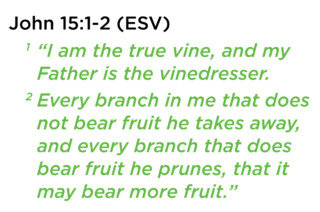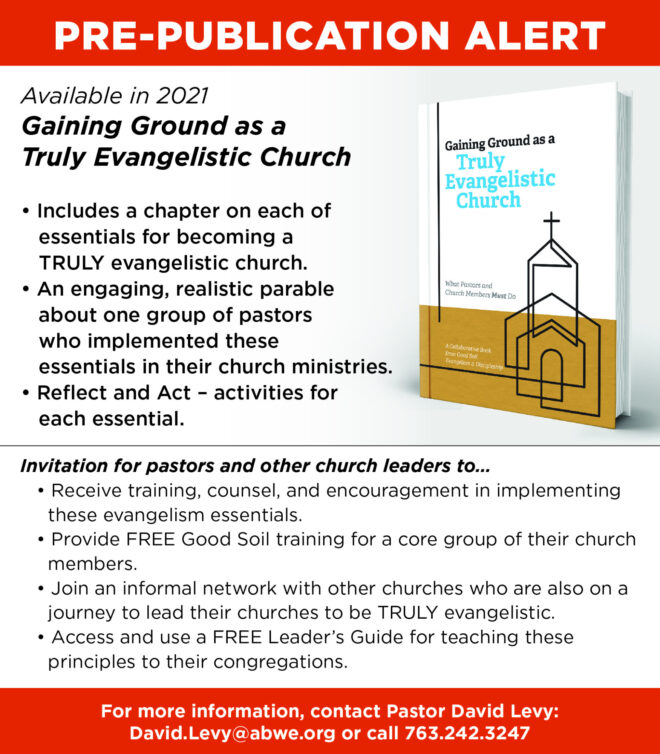Strategic Simplicity: Trimming the "Less Important" from Your Church 11th Essential for a TRULY Evangelistic Church

Many evangelical churches have added so many auxiliary programs and activities that they run out of steam before getting to the main things. What’s the answer? Strategic simplicity!
Life in the New Testament church was simple—gather for fellowship, listen to the Scriptures expounded, pray, worship, and praise the Savior who redeemed them, exhort one another to love and good works, launch out to tell others about Jesus.
Five Realities Pastors and Churches Need to Face
First – Each of your church members has a limited amount of time and energy to spend in church-related activities.
Second – Church programming tends to grow from simplicity to complexity. Complexity is a subtle tendency; simplicity is a staunch choice.
Third – The more complex and diversified your church programming becomes, the more you must “draw down” on church members’ time and energy to participate in and maintain those programs and, consequently, the quality and impact of ministry is diluted.
Fourth – Often, the problem of finding enough workers to staff ministry programs, is not “too few workers” but “too many programs.”
Fifth – Less important activities tend to replace THE essentials, and evangelism is likely to be the first to go.
Through nearly 30 years of local church staff-level ministry in three very different churches, I learned that “overprogramming” can derail a church from genuine Great Commission priorities but strategic simplicity can help maintain proper focus.

Good activities can become the enemy of the best, the essentials.
I have a small, wooded area behind my house with many beautiful hardwood trees. But they are infested with huge boa constrictor-like vines that choke the trees to death. What’s the solution? Cut the vines. The squirrels like the vines! The birds like the vines! But I’ve gotta cut the vines, at least the ones that do the most damage.
Yes, but people and programs are not vines. Be careful before you crank up the chainsaw. You might cut the vines and kill the trees while you are doing it.
I’ve saved this essential for next to the last, not because it’s not an essential “essential,” but because it’s the most sensitive essential to tackle, especially for legacy churches that have been building programs for years.
Hopefully, after the congregation begins to see some evangelistic results and experiences some “shared joy,” church folks will better understand the need for “strategic simplicity.”
Five Simplifying Actions Steps
Step One: Clearly explain the strategy of simplicity.
Start with your leadership team, then plan a clear way to introduce your congregation to the idea. Perhaps a study on the New Testament church is a good way to start.
People transferring from other churches often want to bring the complexity of their former churches with them. I’ve heard more than a few of their, “We had this great program in our former church, I’d like to start it here,” stories. The best way to deal with that is to clearly orient new members of your “strategic simplicity” approach to keep the church focusing on the essentials. Early on, they need to know and buy into the kind of church culture that exists—or that you hope will soon exist—in your church.
Step Two: Don’t start a new program or recurring activity unless it can pass the Great Co-missional “litmus test.”
Remember, a new program is much easier to start than it is to kill. The test: Does the suggested program genuinely and significantly contribute to the church’s “Great Commission mission.”
Step Three: Review existing programs in light of New Testament essentials.
This is potentially a disruptive step—even a church splitter. Move carefully and slowly. Splitting the church is counterproductive to what you want to accomplish. In some cases, the following step (Step Four) can resolve the problem of programs that contribute little or nothing to THE mission.
But let me be clear, lest you misunderstand me: Obviously, evangelism is not the onlyessential in THE mission of the church. Worship, fellowship, Bible teaching, and compassion ministries are also essentials around which valid programs can, should, and must exist.
Step Four: Where there is genuine and significant mission-potential, refine and refocus.
For example, churches often start church softball teams with the sincere goal of reaching men and women for Jesus and the church. But all too often, the goal of winning trophies eclipses the goal of developing redemptive relationships. It’s a frequent case of mission drift. And sometimes bad behavior by some players on the team and fans in the stands becomes more of an evangelistic liability than a positive witness. If so, can your softball teams be “redeemed” and restored to productive outreach?
Another example: Most AWANA programs begin with the goal of reaching children, and parents, from non-Christian homes. Some churches experience amazing evangelistic success with AWANA and stay on track year after year.
But other churches lose sight of the original goal and AWANA devolves into a high maintenance, inward-focused, addition to Sunday school and children’s church for church families. The church kids may love it and their parents probably appreciate the kids-care relief. But, in these cases, is AWANA accomplishing its most essential reasons for being? If not refocused, is it worth the time and energy drain on the church?
The difference is leadership—persistently outreach-focused leadership.
Step Five: Ultimately, if a program is not making a genuine AND significant contribution to an essential missional goal of the church, it should be eliminated.
“Genuine” and “significant” are keywords! Most anything done in the context of a local church can be justified as “ministry” by members who are strongly attached to the activity. But the question is:
Is this activity or program making a “significant enough” “genuine” results-producing contribution to our Lord’s purpose for the church that it justifies the amount of time and energy (and, in some cases, money) expended to maintain and perpetuate it?
Or would the time and energy (and money) be best redirected to the more essential functions of your church?
While wisdom and tact are important in trimming the less-essentials, leaders often err on the side of being too cautious. Moving a church from complexity to simplicity will probably result in some collateral damage, maybe even the loss of some upset members. But if a few change-resistant insiders are preventing the church from reaching a neighborhood full of hell-bound outsiders, I think we know what a God-honoring, Christ-centered, Bible-believing local church should do.
Strategic Simplicity Works!
Many of the churches now making the most significant evangelistic impact are churches that have chosen strategic simplicity over strangling complexity. Andy Stanley of North Point Community Church in Atlanta stated North Point’s rationale for simplicity in these words:
Ultimately what gets squeezed out of churches with complex programming is not ministry to believers but evangelism. Complexity kills the spirit of evangelism in the church because unchurched people never clamor for our attention. It’s always the churched people who are asking for more programs. So eventually all the resources are consumed trying to keep insiders happy; meanwhile, the outsiders just go to the lake on Sunday morning.
In other words, complex programming is almost always inward-focused, leaving little or no congregational energy for reaching outsiders, the very ones who need the good news the Church has been commissioned to proclaim.
Final Thoughts
Writing this article has made me think about the “boa constrictor” vines that are choking the trees in my wooded lot to death. So I ordered a chainsaw to cut through the death grips of complexity. I’m going to be very careful as I cut the vines so as not to harm the trees and my little forest. But I don’t want to be so careful that these choker-vines win. It’s a tedious balance, especially initially for me.
Metaphorically, this is the “moral of the story” of strategic simplicity in church ministry—cut the vines so the trees are healthier, but do it wisely so as not to kill the forest.
Of course, not all vines are destructive. Some vines are beautiful and fruitful. Jesus used a "good vine" cutting analogy in a parable about the vitality of believers’ spiritual lives:

Pruning, done right, is a key to fruitfulness! “Less” is the way to “more.”

Here’s a look back and a look forward to the entire set of articles in this “Twelve Essentials to a TRULY Evangelistic Church” series:
- Evangelical Pastor
- E-Team
- THE Mission
- Local Focus
- Congregational Warmth
- Equipped Congregation
- Basic Discipleship
- Peer Accountability
- Evangelistic Praying
- Shared Rejoicing
- Strategic Simplicity
- Relentless Pursuit


